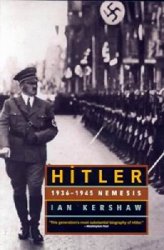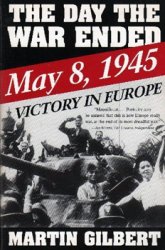Captured
In the immediate aftermath of the Chiricahua Reservation’s closing, prominent Apache leaders were widely scattered. Juh escaped from Clum with Geronimo but went down into the Sierra Madre Mountains in northwest Mexico. Naiche remained at San Carlos. Geronimo, with about 40 warriors, visited Victorio in New Mexico at the Warm Springs (Ojo Caliente) Reservation.
John Clum arrived at Warm Springs with a large body of Indian police and asked to speak with Geronimo. On April 21, 1877, Geronimo, along with six other men, went to see Clum. They found him with about a half-dozen police on the porch of an agency building. Geronimo stated his refusal to go to San Carlos and threatened Crum. At that point, approximately 80 armed police burst out of the commissary building. Geronimo and seven other leaders were chained and, for want of a guardhouse, held in a corral. They soon were transported to San Carlos. Victorio was allowed to remain temporarily at Ojo Caliente. The rest of Geronimo’s group also was taken to the Arizona reservation, where Geronimo and the other shackled leaders were kept in the guardhouse.
Clum wanted Geronimo to be hanged, but ultimately quit his position at San Carlos after disputes with the army that included a demand for increased pay. His successor, Henry Lyman Hart, freed Geronimo, who had been imprisoned for four months. Clum’s attitude toward giving Geronimo his freedom was reflected in his son’s later assertion that “they [his leg irons] never should have been removed, except to permit him to walk untrammeled to the scaffold.”10 Geronimo states in his autobiography that after being released, he was allowed to live near San Carlos at a place named after him. He added, “All went well here for a period of two years, but we were not satisfied.”11
Death of Victorio
During this time of relative peace for Geronimo, Victorio was arguing to stay at Ojo Caliente. In 1878, his Chihennes were ordered to San Carlos, but Victorio and 50 warriors took to the hills. By January of the following year, Victorio was negotiating with the government about some possibility of his
Staying with the Mescaleros on their reservation in New Mexico or even returning to Ojo Caliente. By summer the prospects looked good for the Chihennes’ being permitted to reside on the Mescalero Reservation.
Unfortunately, Victorio learned that Grant County had handed down indictments against him for murder and horse stealing—actions apparently committed by Poinsenay. On August 21, 1879, a group of men from Silver City, including the judge and district attorney, arrived at the Mescalero Reservation. Although they were actually on a hunting and fishing outing, Victorio assumed that they had come to arrest him and fled with about 80 warriors into Mexico.
For the next two years, Victorio and his band outran and outfought their adversaries both north and south of the border, causing many deaths. On October 14, 1880, however, a Mexican force under Colonel Joaquin Terrazas caught up with Victorio. Taking the Apaches by surprise at a place called Tres Castillos, Terrazas and his men killed 78, including 62 warriors (all of whom they scalped for the bounty on Apache scalps), and took 68 women and children captive. Just 17 Apaches escaped, including Nana and Victorio’s son-inlaw, Mangus. Among the dead was Victorio. Terrazas’ army suffered only 3 fatalities. The Mexican troops rode triumphantly into the city of Chihuahua with the 78 scalps borne aloft on poles. The collective bounty on the scalps reportedly came to $50,000.12
Troubles at San Carlos
Geronimo recalled that his life at San Carlos was largely uneventful for about two years. Those times, however, were not without problems. The close proximity of a variety of tribes and bands led to tensions that sometimes escalated into violence. Poinsenay, for example, returned from raids into Mexico to brag about his accomplishments and recruit young men to go with him. Juh also dispatched warriors to San Carlos to seek recruits. Yet even when Victorio and Nana headed toward Mexico, Geronimo, along with Naiche, remained at San Carlos.
With conflict mounting on the reservation, Geronimo became increasingly dissatisfied and considered leaving. A cousin of Geronimo, Jason Betzinez, who wrote an autobiography called I Fought with Geronimo, recalled an incident that may have played a role in convincing Geronimo to leave. According to Betzinez, Geronimo, who had been drinking, scolded his nephew, so humiliating the young man that he committed suicide. The nephew was the son of Geronimo’s sister, Nahdoste, and Nana. Betzinez adds that “Geronimo, blaming himself for his nephew’s death, left the reservation and joined Juh’s group which intended to flee to Mexico.”13 Leaving in early April 1878, he took with him his wives Cheehaskish and Shegha, his two children, and other members of his family. In contrast, Betzinez remained at San Carlos with his mother and sister.
San Carlos and the Prophet Nochaydelklinne
Geronimo and Juh, from their camp in the Guadalupe Mountains just north of the Mexican border near the Arizona-New Mexico line, sent word that they were interested in returning to San Carlos. In the fall of 1879, Captain Harry L. Haskell, accompanied by an interpreter, possibly Thomas Jeffords, visited the camp. Summoned back the next day, Haskell went with Jeffords and Archie McIntosh, a scout for General Crook. The negotiations concluded, with Geronimo returning to San Carlos around the end of the year.
By now Geronimo had taken a third wife, Shtshashe. Apparently about the same time, Geronimo’s daughter Dohnsay was honored as one of the three outstanding women in their band, although the reasons for this honor remain unknown. In addition to his family, Geronimo busied himself with planting crops, determined to live a peaceful life. That, however, was not to be.
Geronimo learned of a man named Nochaydelklinne who had begun to hold mystical circle dances and who claimed that he had received a vision of a future in which the Apache dead would return to life and the Euro-Americans vanish from their land. Known as the Prophet, he believed that he was impervious to enemy bullets. Like other revitalization messages that occurred periodically throughout other Indian cultures (including Wovoka’s vision among the Paiutes), Nochaydelklinne’s approach was essentially nonviolent. However, given the Euro-Americans’ fear of any message that offered Indians hope while prophesying their own removal, these revitalization movements usually ended violently. For example, Euro-American hostility to the Ghost Dance, a pivotal revitalization ritual for the Lakota, led to the death of Sitting Bull and precipitated the massacre at Wounded Knee.
In late August 1881, a large group of Apaches gathered for one of the Prophet’s dances at Cibecue Creek near Fort Apache. This area was under the authority of the San Carlos agent, Joseph Tiffany, despite its not actually being part of the San Carlos Reservation. The commander of Fort Apache was Colonel Eugene Asa Carr. Tiffany urged Carr either to arrest or to kill Nochaydelklinne.
On August 29, Carr left Fort Apache with 117 soldiers and 23 Indian scouts for Cibecue Creek. Warriors gathered around the Prophet to protect him. When Nochaydelklinne promised to go with the soldiers as soon as he had his lunch, Carr agreed to those terms. Carr directed some of his soldiers and scouts to bring him in, but they grew tired of waiting and pulled Nochaydel-klinne to his feet. Firing began, but the Prophet restored calm. As tension again escalated between the soldiers and warriors, firing resumed.
Believing that he could not be killed, Nochaydelklinne refused to flee, but his wife was killed trying to protect him, as was his son. After being wounded several times, the Prophet was eventually killed when a soldier hit him in the head with an ax.
The resulting battle lasted much of the day. Most of the scouts turned against the soldiers and fought beside Nochaydelklinne’s followers. It was
Perhaps the only time in all of the Indian wars that Indian scouts turned on the soldiers whom they had committed to support. In addition to the Prophet, approximately 18 Indians were killed, along with 8 soldiers. Carr and his men were in serious jeopardy, but under cover of darkness they withdrew and returned to Fort Apache. The Apaches then moved on the fort, attacking it unsuccessfully.
Whether Geronimo participated in this battle is unknown. He does not mention it in his autobiography, but that omission is not proof of his lack of participation. Indian autobiographies tend to downplay battles against U. S. soldiers and civilians because they inevitably are composed after the authors are no longer waging war and instead are living under the control of U. S. authorities.
Major General Orlando Willcox, commander of the Department of Arizona, brought in military reinforcements from other parts of Arizona and from New Mexico and California. Rumors circulated that Apache leaders were to be arrested. Geronimo cites this rumor as occurring in 1883 in his autobiography, but he is clearly mistaken in the year. Given earlier incidents of betrayal, Geronimo understandably feared treachery when in late September 1881 he and other leaders were invited to attend a council at Fort Thomas.
Determined to die fighting rather than succumb to death in a prison, Geronimo led about 250 Indians, mainly Bedonkohe and Nednai Apaches, off the reservation. The group included Victorio’s son, Naiche, and Juh. Among those who remained at San Carlos was the Chihenne leader Loco.




 World History
World History









